| Listing 1 - 10 of 25 | << page >> |
Sort by
|
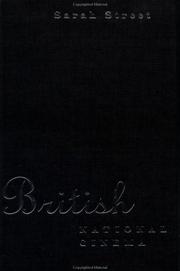
ISBN: 0415067359 0415067367 Year: 1997 Publisher: London Routledge
Abstract | Keywords | Export | Availability | Bookmark
 Loading...
Loading...Choose an application
- Reference Manager
- EndNote
- RefWorks (Direct export to RefWorks)
Film --- Great Britain --- Motion pictures --- Motion picture industry --- Cinéma --- History --- History. --- Histoire --- Industrie --- #SBIB:309H1313 --- #SBIB:AANKOOP --- #SBIB:309H1320 --- Geschiedenis en/of organisatie van het filmwezen: algemeen en per land (met inbegrip van de rol van het filmwezen in de ontwikkelingsproblematiek) --- De filmische boodschap: algemene werken (met inbegrip van algemeen filmhistorische werken en filmhistorische werken per land) --- Cinéma --- Film industry (Motion pictures) --- Moving-picture industry --- Cultural industries
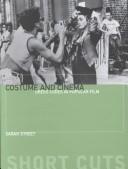
ISBN: 9781903364185 1903364183 Year: 2001 Publisher: London Wallflower
Abstract | Keywords | Export | Availability | Bookmark
 Loading...
Loading...Choose an application
- Reference Manager
- EndNote
- RefWorks (Direct export to RefWorks)
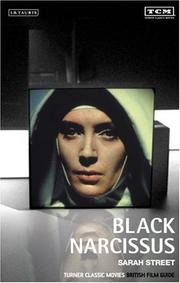
ISBN: 1845110463 9781845110468 Year: 2005 Publisher: London New York I.B. Tauris
Abstract | Keywords | Export | Availability | Bookmark
 Loading...
Loading...Choose an application
- Reference Manager
- EndNote
- RefWorks (Direct export to RefWorks)
"Now heralded as a masterpiece, Black Narcissus is a landmark film in Michael Powell and Emeric Pressburger's influential canon, and remains a highlight of British and indeed of world cinema. Enigmatic and deeply memorable, the film, starring Deborah Kerr and based on Rumer Godden's best-selling novel about the emotional dissolution of nuns in the Himalayas, has left behind enduring images of both place and gender. This book - the first dedicated exclusively to Powell and Pressburger's 1947 film - draws on archival documents as well as original set drawings and stills to demonstrate its remarkable achievements, both as a production and as a complex meditation on the end of empire. Black Narcissus is a masterly technical achievement, with its numerous innovations including cinematographer Jack Cardiff's experiments in Technicolor and the ambitious recreation of the Himalayan landscape in Sussex and at Pinewood studios, and Street here discusses the creative input of all the production team. She assesses Black Narcissus' nuanced representations of East-West relations and of the volatile political situation in India at the time, and reviews its controversial reception by international critics and censors. Looking finally at its subsequent impact on experimental filmmakers, Street explores issues of style, performance and interpretation to reveal the continued relevance of Black Narcissus today."--Jacket.
Motion pictures --- Nuns in motion pictures --- History --- History and criticism --- Catholic Church --- In motion pictures. --- Black narcissus (Motion picture) --- History and criticism. --- #SBIB:309H1320 --- #SBIB:309H1321 --- De filmische boodschap: algemene werken (met inbegrip van algemeen filmhistorische werken en filmhistorische werken per land) --- Films met een amusementsfunctie en/of esthetische functie: algemeen --- Church of Rome --- Roman Catholic Church --- Katholische Kirche --- Katolyt︠s︡ʹka t︠s︡erkva --- Römisch-Katholische Kirche --- Römische Kirche --- Ecclesia Catholica --- Eglise catholique --- Eglise catholique-romaine --- Katolicheskai︠a︡ t︠s︡erkovʹ --- Chiesa cattolica --- Iglesia Católica --- Kościół Katolicki --- Katolicki Kościół --- Kościół Rzymskokatolicki --- Nihon Katorikku Kyōkai --- Katholikē Ekklēsia --- Gereja Katolik --- Kenesiyah ha-Ḳatolit --- Kanisa Katoliki --- כנסיה הקתולית --- כנסייה הקתולית --- 가톨릭교 --- 천주교
Book
ISBN: 1315006200 1136219889 9781136219887 9781136219955 1136219951 9781136220029 113622002X 9780415168007 9780415168014 9781315006208 Year: 2016 Publisher: New York
Abstract | Keywords | Export | Availability | Bookmark
 Loading...
Loading...Choose an application
- Reference Manager
- EndNote
- RefWorks (Direct export to RefWorks)
Motion pictures --- Cinema --- Feature films --- Films --- Movies --- Moving-pictures --- Audio-visual materials --- Mass media --- Performing arts --- History. --- History and criticism
Book
ISBN: 303151307X Year: 2024 Publisher: Cham : Springer Nature Switzerland : Imprint: Palgrave Macmillan,
Abstract | Keywords | Export | Availability | Bookmark
 Loading...
Loading...Choose an application
- Reference Manager
- EndNote
- RefWorks (Direct export to RefWorks)
This open access book examines how Pinewood came to be Britain’s dominant film studio complex, focusing on key years following the Second World War. It presents a revisionist, micro history organized around key themes that are crucial to understanding the studios’ longevity during a particularly turbulent period. Pinewood’s survival at a time when other major film studios such as Denham closed, is explained. The book examines contemporary insights into how Pinewood’s technologies and practices compared to Hollywood’s when filmmaking methods were being scrutinized. Thirteen films produced in 1946-7 are analysed in detail, tracking how economic pressures engendered many creative techniques and innovative technologies. Prevailing cultures of management and labour organization are foregrounded, as well as insights into being a studio employee. These are vividly brought to life through an in-depth focus on the in-house studio magazine the Pinewood Merry-Go Round which provides rare details of sports and leisure activities organized at the studios. Sarah Street is Professor of Film at the University of Bristol. Publications include British National Cinema (1997), Transatlantic Crossings: British Feature Films in the USA (2002), Colour Films in Britain: The Negotiation of Innovation, 1900-55 (2012), Chromatic Modernity: Color, Cinema, and Media of the 1920s (2019, with Joshua Yumibe), and The Eastmancolor Revolution (2021, with Keith M. Johnston, Paul Frith and Carolyn Rickards).
Motion pictures --- British Film and TV. --- Film and Television Production. --- Great Britain. --- Production and direction.
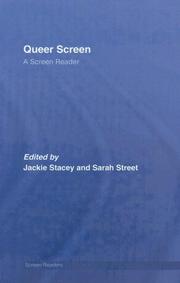
ISBN: 9780415384308 9780415384315 Year: 2007 Publisher: London Routledge
Abstract | Keywords | Export | Availability | Bookmark
 Loading...
Loading...Choose an application
- Reference Manager
- EndNote
- RefWorks (Direct export to RefWorks)
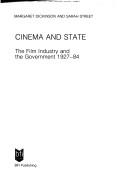
ISBN: 0851701604 0851701612 Year: 1985 Publisher: London BFI
Abstract | Keywords | Export | Availability | Bookmark
 Loading...
Loading...Choose an application
- Reference Manager
- EndNote
- RefWorks (Direct export to RefWorks)
Motion picture industry --- Government policy --- 791.43.01 --- -#SBIB:309H1311 --- #SBIB:309H1312 --- #SBIB:309H1313 --- Film industry (Motion pictures) --- Moving-picture industry --- Cultural industries --- Filmologie. Filmtheorie. Esthetica van de film --- -Filmwezen: communicatiepolitieke aspecten (nationaal - internationaal) --- Filmwezen: bedrijfseconomische aspecten, productie- en distributiestructuren --- Geschiedenis en/of organisatie van het filmwezen: algemeen en per land (met inbegrip van de rol van het filmwezen in de ontwikkelingsproblematiek) --- Margaret Dickinson and Sarah Street --- film --- filmgeschiedenis --- Groot-Brittannië --- filmproductie --- film en politiek --- censuur --- wereldoorlogen --- 791.43 --- 791.43.01 Filmologie. Filmtheorie. Esthetica van de film --- #SBIB:309H1311 --- Filmwezen: communicatiepolitieke aspecten (nationaal - internationaal) --- AIDES GOUVERNEMENTALES --- CINEMA --- INDUSTRIE CINEMATOGRAPHIQUE --- POLITIQUE ET LE CINEMA --- ROYAUME-UNI --- ECONOMIE --- HISTOIRE --- 1927-1984
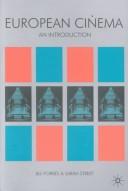
Abstract | Keywords | Export | Availability | Bookmark
 Loading...
Loading...Choose an application
- Reference Manager
- EndNote
- RefWorks (Direct export to RefWorks)
791.43 <4> --- #SBIB:004.AANKOOP --- #SBIB:309H1313 --- #SBIB:309H1320 --- Filmkunst. Films. Cinema--Europa --- Geschiedenis en/of organisatie van het filmwezen: algemeen en per land (met inbegrip van de rol van het filmwezen in de ontwikkelingsproblematiek) --- De filmische boodschap: algemene werken (met inbegrip van algemeen filmhistorische werken en filmhistorische werken per land) --- Motion pictures --- 791.43 <4> Filmkunst. Films. Cinema--Europa --- Cinema --- Feature films --- Films --- Movies --- Moving-pictures --- Audio-visual materials --- Mass media --- Performing arts --- History and criticism
Multi
ISBN: 9781474273732 9781474273275 9781474273336 9781474273343 9781474273725 9781474273350 9781474273367 1474273734 9781474206198 9781474206228 9781350182806 9781474206204 9781474206211 9781474206235 Year: 2021 Publisher: London Bloomsbury Academic
Abstract | Keywords | Export | Availability | Bookmark
 Loading...
Loading...Choose an application
- Reference Manager
- EndNote
- RefWorks (Direct export to RefWorks)
A Cultural History of Color presents a history of 5000 years of color in western culture. The first systematic and comprehensive history, the work examines how color has been perceived, developed, produced and traded, and how it has been used in all aspects of performance - from the political to the religious to the artistic - and how it shapes all we see, from food and nature to interiors and architecture, to objects and art, to fashion and adornment, to the color of the naked human body, and to the way our minds work and our languages are created. --
Aesthetics of art --- History of civilization --- art history --- color [perceived attribute] --- Antiquity --- Medieval [European] --- anno 500-1499 --- Renaissance --- anno 1400-1499 --- anno 1500-1599 --- Enlightenment [18th-century western movement] --- anno 1700-1799 --- anno 1800-1899 --- anno 1900-1909 --- anno 1910-1919 --- anno 1500-1799 --- anno 1800-1999
Book
ISBN: 0231542283 9780231542289 9780231179829 0231179820 9780231179836 0231179839 Year: 2019 Publisher: New York, NY
Abstract | Keywords | Export | Availability | Bookmark
 Loading...
Loading...Choose an application
- Reference Manager
- EndNote
- RefWorks (Direct export to RefWorks)
"In Chromatic Modernity, Sarah Street and Joshua Yumibe provide a fascinating history of the use of color in film and consumer goods during the 1920s. They contextualize color's role in film, other art forms, and consumer culture to produce a comprehensive, comparative study that situates color cinema firmly within the culture of its time. With advances in technology, the use of color surged internationally and was applied to consumer goods, buildings, magazines, neon advertisements, and theatrical performances creating an exciting, chromatically rich visual culture. The use of color was not without its controversies, and the authors examine the intense debates during this period about color and its artistic, scientific, philosophical, and educational significance. Drawing on archives in the history of film, popular culture, and advertising, the authors consider such topics as the rise of the 'color consultant,' the gendered nature of color, ideas of color psychology and consciousness in advertising and fashion, the standardization and experimentation of color in popular and avant-garde film, and how the rise of sound in cinema changed the use of color in film. Ultimately, the authors argue that this expansion of color across the international media environment demonstrates the extent to which it was forging new ways of looking at and experiencing the modern world"--
Color motion pictures --- Color moving-pictures --- Colored motion pictures --- Technicolor pictures --- Motion pictures --- History. --- Color in advertising --- Performing Arts. --- Color in advertising. --- Color motion pictures. --- Inter-war period c 1919 to c 1939. --- Films, cinema. --- Cinéma en couleurs. --- Cinéma --- Publicité --- Couleur. --- Cinéma en couleurs. --- Cinéma --- Publicité
| Listing 1 - 10 of 25 | << page >> |
Sort by
|

 Search
Search Feedback
Feedback About UniCat
About UniCat  Help
Help News
News